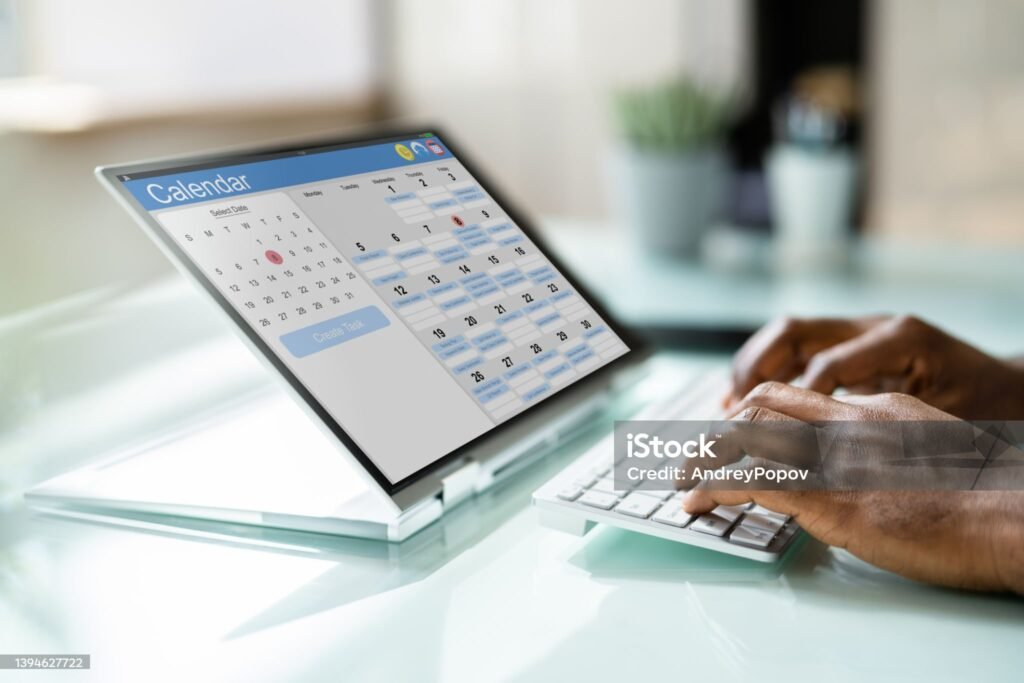In the dynamic world of digital marketing, email remains a cornerstone. It’s the golden thread that connects businesses with their audience in a personal, direct way. But with so many tools on the market, choosing the right one can feel like finding a needle in a haystack. Enter Moosend and Sender, two of the most buzzworthy email marketing tools in 2024. But which one stands out? Which one should you entrust with your precious email campaigns? Let’s dive deep and compare these two giants, feature by feature, to help you make an informed decision.
| Moosend | Sender |
|---|---|
 |  |
| G2 Score – 4.6 out of 5 stars | G2 Score – 4.4 out of 5 stars |
| TrustRadius Score – 9.8 out of 10 | TrustRadius Score – 5.2 out of 10 |
User Interface and Ease of Use
First impressions matter, and in the world of software, that first impression is the user interface (UI). A cluttered, confusing UI can be a deal-breaker, while a sleek, intuitive one can be a game-changer. So, how do Moosend and Sender stack up in this arena?
Moosend: A UI That Speaks Your Language
Moosend’s UI is a breath of fresh air. It’s clean, uncluttered, and remarkably user-friendly. Right from the dashboard, you’re greeted with a straightforward layout that feels familiar, even if you’re new to it. The menu is intuitive, with clearly labeled sections like Campaigns, Lists, and Automation. It’s apparent that Moosend has put thought into making their platform accessible to users of all skill levels.
Creating an email campaign in Moosend is a breeze. The drag-and-drop editor is a standout feature, allowing you to design emails without needing any technical know-how. It’s as simple as picking elements like text boxes, images, and buttons, and placing them where you want them. The editor also provides real-time previews, so you can see how your email looks as you build it.
But Moosend isn’t just about looks; it’s about efficiency too. The platform offers smart features like email templates that are not only beautiful but also customizable. Whether you’re crafting a newsletter, a promotional email, or a simple announcement, there’s a template for every occasion. This feature is a boon for time-pressed marketers who need to churn out professional-looking emails quickly.
Moreover, Moosend’s segmentation tools are top-notch. They allow you to slice and dice your email list based on various criteria like demographics, past interactions, and behaviors. This level of segmentation is critical for sending targeted, relevant emails that resonate with your audience and drive engagement.
Sender: Simplicity Meets Sophistication
On the other side, we have Sender. Just like Moosend, Sender prides itself on a user-friendly interface. However, while Moosend opts for simplicity, Sender takes a slightly more sophisticated approach. Its dashboard provides more data upfront, which can be a double-edged sword. For the data-driven marketer, it’s a treasure trove of information. For the beginner, it might be a bit overwhelming at first glance.
Sender’s email creation process is equally intuitive, with a drag-and-drop editor that rivals Moosend’s in ease of use. The editor is fluid, responsive, and offers a wide array of customization options. Sender also excels in its template offerings, with a rich library of pre-designed templates that cater to various industries and occasions.
Where Sender shines is in its analytics. The platform provides detailed insights into how your emails are performing. You can track opens, clicks, bounces, and even conversions directly from the dashboard. This level of detail is invaluable for understanding your audience’s behavior and tweaking your campaigns for better results.
Comparing the UI and Ease of Use: A Close Call
When it comes to user interface and ease of use, both Moosend and Sender make strong cases. Moosend’s strength lies in its simplicity and intuitiveness, making it a great choice for beginners or those who value straightforwardness in their tools. Sender, while also user-friendly, offers a bit more depth in its interface and analytics, which might appeal more to those who crave detailed data and customization.
The choice between Moosend and Sender in terms of UI and ease of use ultimately boils down to personal preference and specific needs. Do you favor a clean, simple interface with essential functionalities at your fingertips? Or do you prefer a slightly more complex platform that offers deeper insights and customization? Your answer to these questions will guide your choice.
Email Automation Capabilities
In today’s fast-paced digital landscape, automation is not just a luxury; it’s a necessity. Email marketing tools need to offer robust automation features that save time and deliver personalized experiences to customers. Let’s see how Moosend and Sender fare in this crucial aspect.
Moosend: Streamlining Email Marketing
Moosend’s automation capabilities are impressive. The platform offers a range of pre-built automation templates, making it easy to set up complex email sequences without the need for extensive technical know-how. These templates cover a variety of scenarios, from welcoming new subscribers to re-engaging dormant ones.
One of the standout features of Moosend’s automation is its flexibility. You can create custom workflows that trigger based on specific actions, such as when a subscriber clicks a link or makes a purchase. This level of customization allows for highly targeted and relevant email campaigns that can significantly boost engagement and conversions.
Additionally, Moosend provides excellent segmentation within its automation workflows. This means you can tailor your messages based on subscriber behavior, preferences, and past interactions, ensuring that each email feels personal and relevant.
Sender: Powerful Automation with a Personal Touch
Sender’s approach to automation is equally commendable. It offers a user-friendly interface for creating automated email sequences, with a range of triggers and actions to choose from. Like Moosend, Sender also provides pre-built automation templates, which are a great starting point for those new to email automation.
What sets Sender apart is its detailed personalization options within the automation workflows. You can not only segment your audience based on standard criteria but also use advanced personalization tags to tailor your content down to the individual level. This capability is particularly valuable in creating a sense of one-on-one conversation with your subscribers, enhancing the overall customer experience.
Sender’s analytics also play a crucial role in its automation effectiveness. The platform provides in-depth reports on the performance of your automated campaigns, allowing you to continuously optimize and improve your strategies for better results.
Email Automation: A Battle of Nuances
Both Moosend and Sender excel in providing robust email automation features. The choice between the two often comes down to nuances and specific business needs. Moosend offers a more streamlined, perhaps more user-friendly approach to automation, making it ideal for those who want efficiency without complexity. On the other hand, Sender’s strength lies in its advanced personalization and detailed analytics, which are perfect for businesses that want to dive deep into customer behavior and tailor their communications accordingly.
In summary, if you’re looking for an email marketing tool that makes automation simple yet effective, Moosend is an excellent choice. Its intuitive interface and customizable automation templates cater to a wide range of marketing needs without overwhelming the user. On the other hand, if your focus is on crafting highly personalized email experiences and you appreciate detailed analytics to fine-tune your strategies, Sender is the way to go. Its advanced personalization capabilities and in-depth reporting features are ideal for marketers who want to delve deeper into customer engagement and behavior analysis.
Both platforms demonstrate that effective email automation is about more than just sending out emails at predetermined times. It’s about understanding your audience, responding to their actions in real-time, and creating a dialogue that feels personal and engaging. Whether you choose Moosend or Sender, you’re equipped with powerful tools to take your email marketing to the next level.
Pricing Plans: Balancing Cost and Value
In the world of business, budget matters. The right email marketing tool should not only fit your marketing needs but also align with your financial constraints. Let’s compare the pricing structures of Moosend and Sender to see which offers the best value for money.
| Moosend | Free Plan: Offers access to basic features for up to 1,000 subscribers, including email campaigns, automation, and landing pages. Pro Plan: Pricing starts at $8 per month for up to 2,000 subscribers, with unlimited emails. Includes advanced features like transactional emails, landing page builder, and phone support. The price scales with the number of subscribers. Enterprise Plan: Custom pricing for businesses needing custom features like account management, SSO (Single Sign-On), and more. |
| Sender | Free Plan: Up to 2,500 subscribers and 15,000 emails per month. Includes basic features like newsletters and subscription forms. Standard Plan: Starting at $11/month for up to 5,000 subscribers and 60,000 emails. Includes advanced features like autoresponders and transactional emails. Professional Plan: Custom pricing based on higher volumes of subscribers and emails, including additional features like dedicated IP and webhooks. |
Moosend: Affordable and Scalable
Moosend’s pricing is designed with scalability in mind. It offers a free plan, which is a great starting point for small businesses or individual marketers. The free plan includes access to most of the platform’s core features, but with limitations on the number of subscribers and email sends.
As your needs grow, you can upgrade to Moosend’s paid plans, which are based on the number of subscribers. These plans are reasonably priced and offer unlimited emails, making Moosend a cost-effective option for businesses of all sizes. Additionally, Moosend provides custom pricing for enterprises with specific needs, ensuring that larger organizations can also benefit from tailored solutions.
An attractive aspect of Moosend’s pricing is the transparency. There are no hidden fees, and you get access to nearly all features, regardless of the plan you choose. This straightforward approach makes it easier for businesses to budget and plan their email marketing expenses.
Sender: Competitive Pricing with Generous Features
Sender also offers a free plan, which is competitive in terms of the features and limits it provides. For startups and small businesses, this plan is a great way to explore the platform’s capabilities without financial commitment.
When it comes to paid options, Sender’s pricing is based on both the number of subscribers and the volume of emails sent. This dual-criteria pricing can be both a benefit and a drawback, depending on your email marketing strategy. If you send emails frequently to a large list, the costs can add up. However, for those who have a smaller list but high engagement, Sender’s pricing can be more economical.
Like Moosend, Sender also offers transparency in its pricing. There are no surprise charges, and the platform provides a clear breakdown of what each plan includes. For larger businesses, Sender has custom plans that cater to specific requirements and offer additional features like dedicated IP addresses and custom integrations.
Pricing: A Matter of Strategy and Scale
Choosing between Moosend and Sender based on pricing comes down to your email marketing strategy and the scale of your operations. Moosend’s subscriber-based pricing is straightforward and scalable, making it an excellent choice for businesses that are growing or have a large number of subscribers. On the other hand, Sender’s hybrid pricing model of subscribers and email volume might be more cost-effective for businesses with a smaller subscriber base but high engagement rates.
In conclusion, both platforms offer competitive pricing structures with generous features at each level. Your decision should be based on your specific business needs, the size of your email list, and the frequency of your email campaigns. If you’re a small business or a startup just venturing into email marketing, both Moosend’s and Sender’s free plans provide a solid starting point with ample features to get you going. As your business grows, you can assess which platform’s scaling costs align better with your expanding needs.
Moreover, it’s important to consider not just the cost, but also the value you’re getting from each platform. A slightly higher price might be justifiable if it comes with features that significantly boost your marketing effectiveness or save you time. Ultimately, the best choice is one that offers a balance between functionality, scalability, and cost-efficiency, aligned with your business goals and budget constraints.

Related: Check out our free SEO suite

Customer Support: Ensuring a Smooth Experience
Effective customer support is crucial in the realm of email marketing tools. It’s not just about solving problems but also about enhancing the user experience and providing guidance. Let’s see how Moosend and Sender stack up in terms of customer support.
Moosend: Responsive and Helpful
Moosend takes customer support seriously. They offer a variety of support channels, including email, live chat, and a knowledge base. The response times are generally quick, especially on live chat, where you can expect almost instant assistance during working hours. This immediacy is crucial when you’re dealing with time-sensitive email campaigns.
Another impressive aspect of Moosend’s customer support is the quality of their assistance. Their support team is knowledgeable and friendly, capable of addressing a wide range of issues from technical glitches to strategic advice. Additionally, Moosend’s knowledge base is comprehensive, filled with helpful articles, tutorials, and FAQs. This resource is particularly useful for users who prefer self-service.
Sender: Dedicated and Comprehensive
Sender also shines in the customer support department. They provide support through email, live chat, and a resource-rich knowledge base. Like Moosend, Sender’s live chat is prompt and efficient, offering quick resolutions to user queries.
What sets Sender apart is the depth of their support. Their team not only helps with technical issues but also provides insights and tips to improve your email marketing strategies. This approach is especially beneficial for small businesses or marketers who are still learning the ropes of email marketing.
Furthermore, Sender’s knowledge base is not just a collection of articles; it’s a learning hub. It includes detailed guides, video tutorials, and case studies, making it an invaluable resource for users at all levels.
Customer Support: More Than Just Problem-Solving
Both Moosend and Sender excel in providing top-notch customer support. They understand that support is not just about fixing issues but also about empowering users to make the most out of their platform.
If you value quick, responsive support for immediate issues, Moosend’s efficient live chat and extensive knowledge base will serve you well. On the other hand, if you’re looking for support that goes beyond problem-solving and includes strategic advice, Sender’s dedicated and comprehensive approach will be more appealing.
In the end, great customer support can be the deciding factor in choosing an email marketing tool. It’s about finding a platform that not only solves your problems but also contributes to your growth and learning in the field of email marketing.
Integration Capabilities: Expanding Your Marketing Ecosystem
In the modern marketing landscape, the ability to integrate with other tools and platforms is crucial. An email marketing tool should seamlessly fit into your existing ecosystem of services. Let’s explore how Moosend and Sender fare in terms of integration capabilities.
Moosend: Vast and Versatile Integrations
Moosend boasts an impressive array of integrations. The platform can connect with a wide variety of services, including CRM systems, e-commerce platforms, and lead generation tools. This versatility is a significant advantage, as it allows you to streamline your marketing processes and data management.
Key integrations for Moosend include popular CRM systems like Salesforce and HubSpot, e-commerce platforms such as Magento and Shopify, and several other tools including Zapier, which opens up a world of possibilities for automating workflows. These integrations are not just about data sharing; they’re about enhancing functionality. For instance, integrating Moosend with your e-commerce platform can help in automating personalized product recommendation emails based on customer behavior.
Furthermore, Moosend’s API is robust and well-documented, making it possible for businesses to create custom integrations if needed. This feature is particularly beneficial for larger organizations with unique systems and processes.
Sender: Streamlined and Efficient Integrations
Sender also offers a solid range of integrations, though the list is not as extensive as Moosend’s. However, it covers all the essential bases, connecting seamlessly with popular services like WordPress, WooCommerce, and Shopify. These integrations are designed to enhance the efficiency of your email marketing efforts.
For example, integrating Sender with your WordPress site can help in capturing leads more effectively, while its connection with e-commerce platforms like Shopify allows for automated transactional emails and targeted campaigns based on customer purchase history.
Like Moosend, Sender also offers access to its API for custom integrations. This flexibility is crucial for businesses that require tailor-made solutions to fit their specific needs and workflows. Sender’s API is user-friendly, ensuring that even those with limited technical expertise can leverage its capabilities to enhance their marketing strategies.
Integration Capabilities: Enhancing Your Marketing Workflow
The comparison between Moosend and Sender in terms of integration capabilities highlights a crucial aspect of email marketing tools – the ability to adapt and fit into a diverse marketing tech stack.
Moosend’s strength lies in its vast and versatile range of integrations, making it a formidable choice for businesses that use a wide array of tools and services. Its capability to integrate with numerous platforms ensures that you can maintain a cohesive and streamlined workflow, regardless of the complexity of your marketing ecosystem. Sender, while offering a narrower range of integrations, focuses on delivering streamlined and efficient connections with key platforms. Its integrations are carefully selected to cover the most common and essential needs of businesses, particularly those in the e-commerce and content management realms.
When choosing between Moosend and Sender based on integration capabilities, consider the tools and platforms you currently use or plan to use. If your business relies on a broad range of services and you need a tool that can integrate with almost anything, Moosend is likely the better choice. However, if your needs are more focused and you prefer a tool that provides seamless integration with key platforms, Sender could be the ideal fit.
A/B Testing Capabilities: Optimizing Email Campaigns
A/B testing is a powerful feature in email marketing, allowing you to test different elements of your campaigns to see what works best with your audience. Let’s examine the A/B testing capabilities of Moosend and Sender to understand how they can help optimize your email marketing efforts.
Moosend: Comprehensive and User-Friendly Testing
Moosend offers a robust A/B testing feature that is both comprehensive and user-friendly. You can test various elements of your emails, including subject lines, sender names, content, and even different email designs. This level of detail provides a significant advantage in fine-tuning your campaigns for maximum engagement and effectiveness.
Setting up A/B tests in Moosend is straightforward. The platform guides you through the process, making it easy to create and compare different versions of your emails. Once the test is running, Moosend provides real-time analytics, allowing you to track performance and make informed decisions on which version to use for the rest of your campaign.
What’s particularly beneficial about Moosend’s A/B testing is the ability to test with a segment of your audience before rolling out the winning version to the entire list. This method ensures that your campaigns are as effective as possible, based on actual data and user responses.
Sender: Targeted and Effective A/B Testing
Sender also offers excellent A/B testing capabilities, allowing you to test key elements like subject lines, content, and calls to action. The platform’s focus on targeted testing means you can make precise tweaks to your campaigns and immediately see the impact on your engagement rates.
The A/B testing process in Sender is intuitive and geared towards maximizing the impact of your emails. You can easily create two versions of an email and set the criteria for determining the winner, such as higher open rates or click-through rates. Sender then automatically sends the more successful version to the rest of your audience.
An added advantage of Sender’s A/B testing is its integration with the platform’s analytics tools. This integration provides deeper insights into how different elements of your emails are performing, allowing for more nuanced and data-driven marketing strategies.
A/B Testing: Key to Enhanced Email Marketing
Both Moosend and Sender offer powerful A/B testing features that are crucial for optimizing your email campaigns. The choice between the two depends on your specific needs and preferences. If you prefer a platform that offers comprehensive and detailed A/B testing with a user-friendly interface, Moosend is an excellent choice. Its ability to test a wide range of elements and provide real-time analytics makes it a valuable tool for marketers looking to deeply understand and improve their email strategies. On the other hand, if you’re looking for targeted and effective A/B testing with seamless integration with analytics, Sender is the way to go. Its intuitive testing process and focus on actionable insights make it ideal for businesses that want to quickly iterate and refine their email campaigns based on solid data.
In summary, the effectiveness of your email marketing can significantly improve with the right A/B testing capabilities. Whether you choose Moosend or Sender, you’ll have access to tools that allow you to experiment, learn from your audience’s behavior, and continuously enhance your email campaigns. The key is to use these features actively, testing different hypotheses and applying the insights gained to your future campaigns. Both platforms demonstrate that A/B testing is not just a feature – it’s a pathway to understanding your audience better and crafting messages that resonate more deeply with them.
Reporting Tools: Gaining Insights into Campaign Performance
Effective reporting tools are essential in email marketing as they provide insights into the performance of your campaigns. Understanding how Moosend and Sender fare in this area will help you gauge which platform offers the analytics capabilities you need to monitor and optimize your email marketing strategies.
Moosend: Detailed and Actionable Reporting
Moosend offers comprehensive reporting tools that give you a deep dive into the performance of your email campaigns. The platform provides detailed analytics on key metrics such as open rates, click-through rates, bounce rates, and unsubscribes. These metrics are crucial for understanding how your audience interacts with your emails.
What sets Moosend’s reporting apart is the level of detail and the actionable insights it provides. You can track the performance of individual emails, monitor trends over time, and even see which parts of your email are getting the most engagement thanks to their click heatmap. This information is invaluable for fine-tuning your content and strategy.
Additionally, Moosend offers customizable reports. This feature is particularly useful for businesses that need to track specific metrics or present data in a certain format. You can tailor reports to fit your needs and share them easily with your team or stakeholders.
Sender: Clear and Intuitive Reporting
Sender also offers robust reporting tools that help you understand the effectiveness of your email campaigns. Similar to Moosend, it provides insights into open rates, click-through rates, and other essential metrics. The platform’s interface for reporting is clear and intuitive, making it easy to digest the data and glean insights.
A standout feature of Sender’s reporting is its real-time tracking. You can see how your emails are performing as soon as they’re sent out, which is great for making quick adjustments if needed. The platform also segments reporting data, allowing you to analyze performance based on different subscriber groups, which is vital for targeted marketing strategies.
Like Moosend, Sender also enables customized reports, catering to the specific needs of your business. This flexibility ensures that you can focus on the metrics that matter most to you and make data-driven decisions.
Reporting Tools: Empowering Data-Driven Decisions
The reporting capabilities of both Moosend and Sender are robust, providing you with the essential insights needed to make informed decisions about your email marketing strategies. Moosend’s strength lies in its detailed and actionable reporting, suitable for those who want to delve deep into analytics and gather nuanced insights. The platform’s click heatmap and customizable reports are particularly beneficial for marketers who rely heavily on data to drive their strategies.
Sender, with its clear and intuitive reporting interface, is ideal for those who value real-time insights and ease of use. Its segmented data analysis is a powerful tool for understanding different audience groups and tailoring campaigns accordingly. Ultimately, both platforms offer the analytics capabilities needed to understand your audience’s behavior and the effectiveness of your campaigns. The choice between Moosend and Sender in terms of reporting should be based on your preference for the depth of analytics and the style of reporting that aligns with your business needs.
Concluding Thoughts
In the battle between Moosend and Sender for the title of the best email marketing tool of 2024, it’s clear that both platforms offer unique strengths: Moosend excels with its user-friendly interface, comprehensive automation capabilities, extensive range of integrations, detailed A/B testing, and in-depth reporting tools. Sender, on the other hand, stands out for its sophisticated UI, powerful personalization in automation, efficient and targeted integrations, effective A/B testing, and intuitive reporting features.
The decision between Moosend and Sender boils down to your specific email marketing needs, preferences, and the scale at which you operate. Moosend might be more suitable for businesses looking for a comprehensive, all-in-one tool with extensive features and integrations. Sender could be the better choice for those who prioritize detailed personalization, targeted automation, and real-time analytics. Ultimately, both platforms are equipped to elevate your email marketing efforts, providing the tools and insights necessary to engage your audience effectively. Your choice should align with your marketing goals, budget, and the kind of user experience you and your team are looking for.
Read Next:
- How to use SEMrush: An Explainer
- How to use Zoho CRM: An Explainer
- How to use Tailwind for Social Media: An Explainer
- How to use SocialBee for Social Media: An Explainer
- How to use SproutSocial for Social Media: A Practical Guide






















Comments are closed.